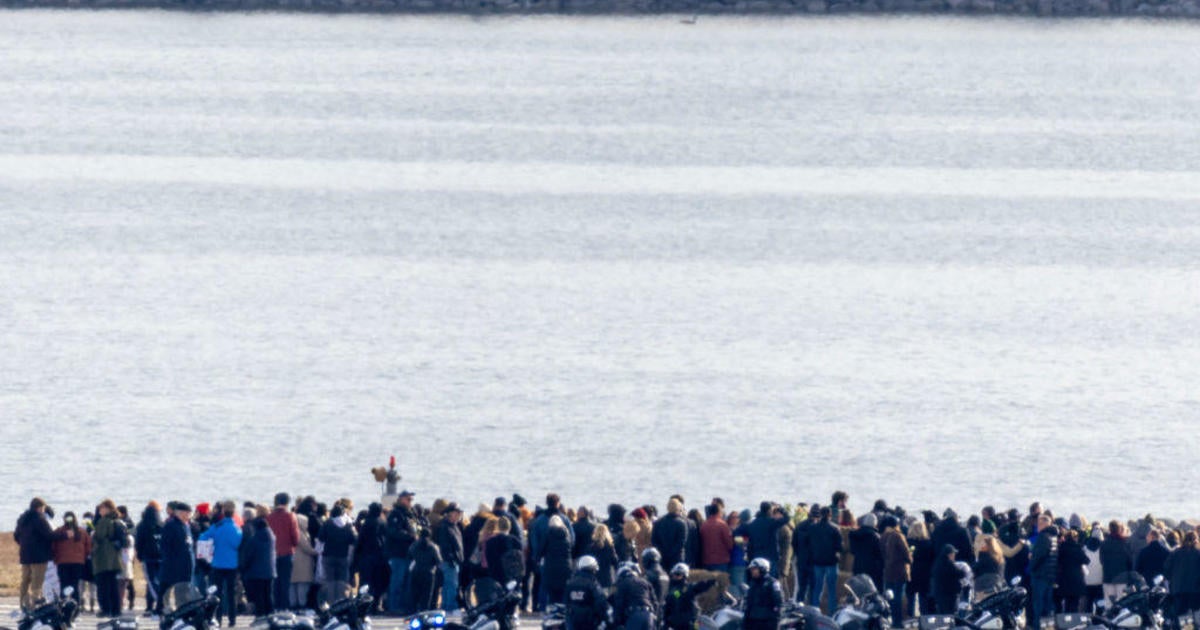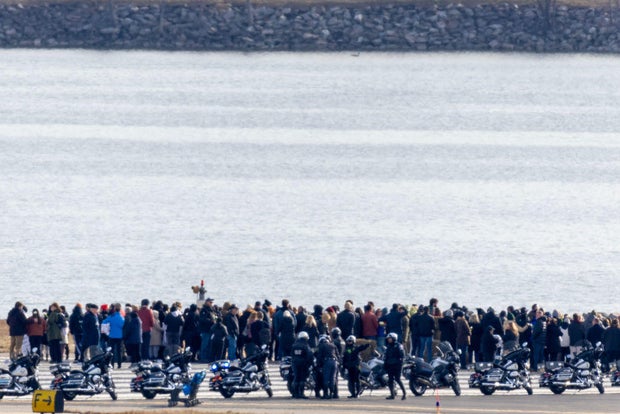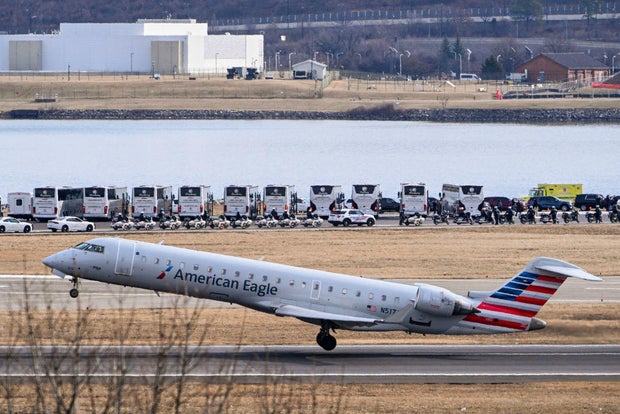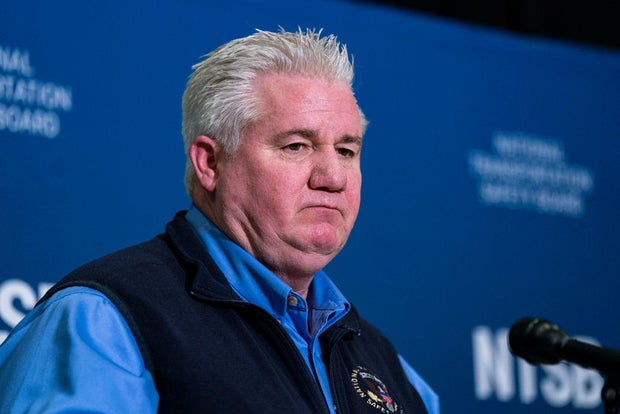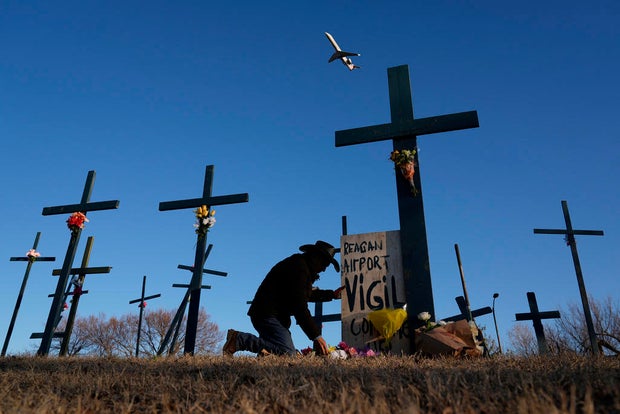The family members of the victims of the deadliest U.S. air disaster in nearly 25 years visited the crash site on Sunday just outside of Washington, D.C.
Ten charter buses with a police escort transported the family members to the banks of the Potomac River near Reagan National Airport, close to where an American Airlines jet and an Army Black Hawk helicopter collided Wednesday, killing all 67 aboard.
/ Getty Images
Meanwhile, federal investigators are working to piece together the events that led to the crash and recovery crews are set to pull more wreckage from the chilly water.
The American Airlines flight, with 64 people on board was preparing to land from Wichita, Kansas. The Army Black Hawk helicopter was on a training mission and had three soldiers on board. Both aircraft plunged into the Potomac River after colliding.
The plane’s passengers included figure skaters returning from the 2025 U.S. Figure Skating Championships in Wichita, Kansas, and a group of hunters returning from a guided trip.
Army Staff Sgt. Ryan Austin O’Hara, 28, of Lilburn, Georgia; Chief Warrant Officer 2 Andrew Loyd Eaves, 39, of Great Mills, Maryland; and Cpt. Rebecca M. Lobach, of Durham, North Carolina, were killed in the helicopter.
ROBERTO SCHMIDT/AFP via Getty Images
The remains of 42 people had been pulled from the river as of Saturday afternoon, including 38 that have been positively identified, officials said. They expect to recover all of the remains, though the plane’s fuselage will probably have to be pulled from the water to get the rest.
The National Transportation Safety Board said Saturday that preliminary data showed conflicting readings about the altitudes of the airliner and the Army helicopter.
Investigators also said that about a second before impact, the jet’s flight recorder showed a change in its pitch. But they did not say whether that change in angle meant that pilots were trying to perform an evasive maneuver to avoid the crash.
Data from the jet’s flight recorder showed its altitude as 325 feet (99 meters), plus or minus 25 feet (7.6 meters), when the crash happened Wednesday night, NTSB officials told reporters. Data in the control tower, though, showed the Black Hawk at 200 feet (61 meters), the maximum allowed altitude for helicopters in the area.
The discrepancy has yet to be explained.
“Our preliminary review of what the tower cab was showing on the data screen that would have been in front of the controllers, was 200 feet near the time of the accident,” NTSB member Todd Inman said on Saturday.
Al Drago / Getty Images
Investigators said they hoped to reconcile the difference with data from the helicopter’s black box, which is taking more time to retrieve because it became waterlogged after the Black Hawk plunged into the Potomac. They also said they plan to refine the tower data, which can be less reliable.
“That’s what our job is, to figure that out,” Inman said.
“This is a complex investigation,” investigator in charge Brice Banning said. “There are a lot of pieces here. Our team is working hard to gather this data.”
Banning said the jet’s cockpit voice recorder captured sound moments before the crash.
“The crew had a verbal reaction,” Banning said, and the flight data recorder showed “the airplane beginning to increase its pitch. Sounds of impact were audible about one second later, followed by the end of the recording.”
Full NTSB investigations typically take at least a year, though investigators hope to have a preliminary report within 30 days.
Investigators said there were five controllers on duty at the time of the crash: a local controller, ground controller, assistant controller, a supervisor and supervisor in training.
“This is a controller’s worst nightmare,” said Inman. “It hits everyone that works in that cab and knows them very hard. These interviews take a long time because there are several breaks that occur for emotions, just to be able to compose themselves to talk about what happened.”
Carolyn Kaster / AP
According to an FAA report obtained by The Associated Press, one controller was responsible for helicopter and plane traffic. Those duties are often divided between two people but the airport typically combines them at 9:30 p.m., once traffic slows down. On Wednesday, the tower supervisor combined them earlier, which the report called “not normal.”
“Staffing shortages for air traffic control has been a major problem for years and years,” Duffy said, promising that President Trump’s administration would address shortages with “bright, smart, brilliant people in towers controlling airspace.”
Wednesday’s crash was the deadliest in the U.S. since Nov. 12, 2001, when a jet slammed into a residential neighborhood in the New York City borough of Queens, just after takeoff from Kennedy Airport. The crash killed all 260 people on board and five people on the ground.
